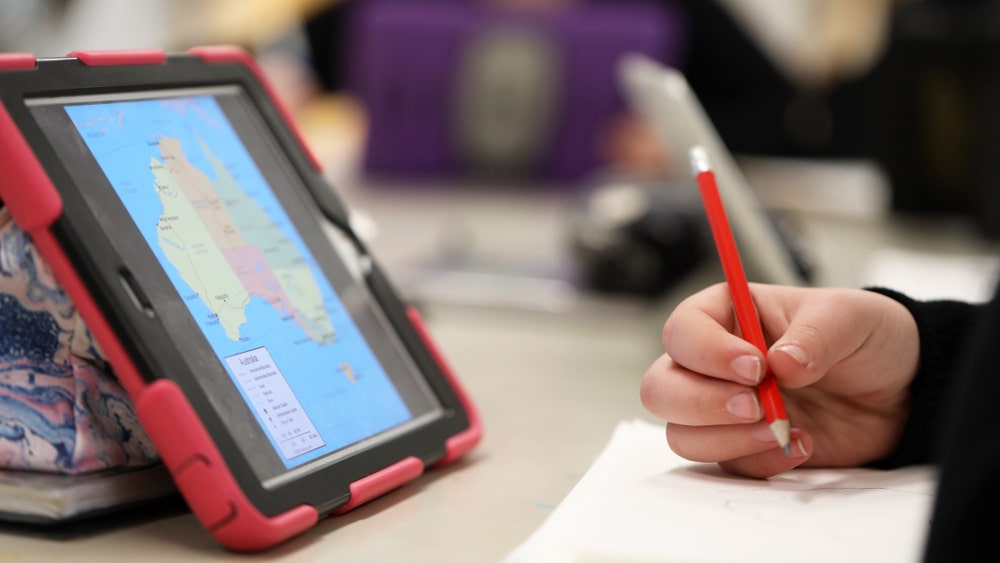New Data Highlights Shifting Perceptions of Tech in the Classroom

Technology has become an integral part of both remote and onsite learning environments.
The debate over the use of technology in the classroom — particularly what kind of technology is appropriate and how often it should be used — has persisted for years. But in 2020, the COVID-19 pandemic brought these discussions to a grinding halt as teachers around the world were forced to rely on technology to keep their students engaged from afar.
To what degree has the pandemic shifted teachers’ perceptions of technology in the classroom? Education marketing firm MDR surveyed nearly 1,000 teachers to find out.
More Teachers View Technology as a “Must Have”
In a 2018 survey conducted by MDR, 63% of teachers indicated that emerging technology was “very useful” or something that they “couldn’t live without.” Fast forward to the present and that number has jumped significantly to 75%, illustrating just how critical technology has become in our current hybrid learning environments.
MDR’s new survey found that Chromebooks (56%) are the most popular devices used by students for distance learning, followed by iPads (16%), Notebooks (12%), and other tablets (5%). In the classroom, the top devices teachers reach for are PCs (82%), classroom projectors (66%), and interactive whiteboards (58%).
New Applications Are Transforming Online Learning
Whether they are hosting a virtual discussion, creating a pop quiz, or helping build community, teachers rely on software applications to bring their lesson plans to life. According to MDR, the leading educational applications in 2020 were:
- Zoom (60%)
- Kahoot! (57%)
- Flipgrid (39%)
- Bitmoji (38%)
- Quizlet (37%)
- Google Meet (34%)
- Screencastify (32%)
- Nearpod (30%)
- Remind (30%)
- ClassDojo (28%)
Of these applications, only four (Kahoot!, Quizlet, Remind, and ClassDojo) were mentioned by teachers in MDR’s 2018 survey, underscoring the demand the pandemic has generated for platforms that enable video conferencing and other ways of connecting virtually.
Adoption and Implementation Challenges Persist
Despite the many benefits technology provides to educators trying to navigate the pandemic, using technology in a classroom — whether virtual or traditional — is not without its challenges.
According to MDR, 62% of teachers say internet access was the biggest problem with distance learning in 2020. As schools across the country commit to hybrid learning models for the remainder of the 2020-2021 school year, this problem persists, widening the educational divide between students from low- and high-income households. “[I work at] a Title I school; internet service at home is a luxury for most of my families,” says one teacher quoted in the report.
But a stable internet connection isn’t the only challenge teachers face. Now that technology is essential to, rather than a complementary part of, most lesson plans, IT issues have become a daily reality for teachers, students, and parents. “While educators were generally satisfied with the technology being used in their classrooms, they did express some concerns about needing to serve as an IT department across multiple platforms and relying on parents’ technical skills,” says MDR.
These daily implementation roadblocks consume valuable classroom time as teachers attempt to troubleshoot program glitches, lost passwords, and more, adding stress to an already challenging learning environment.
Empowering Teachers, Parents, and Students with Real-Time Support
In middle and high schools (where classes run as short as 40 minutes) and elementary schools (where younger children have shorter attention spans), teachers can’t afford to waste time trying to solve IT issues.
At Epiphany, we empower teachers, parents, and students with the resources and tools they need to overcome obstacles in remote and onsite learning environments. From training services that provide software and hardware implementation skills to ongoing, 24/7 remote support, we stand by your end users every step of the way to minimize IT disruptions in the classroom.




